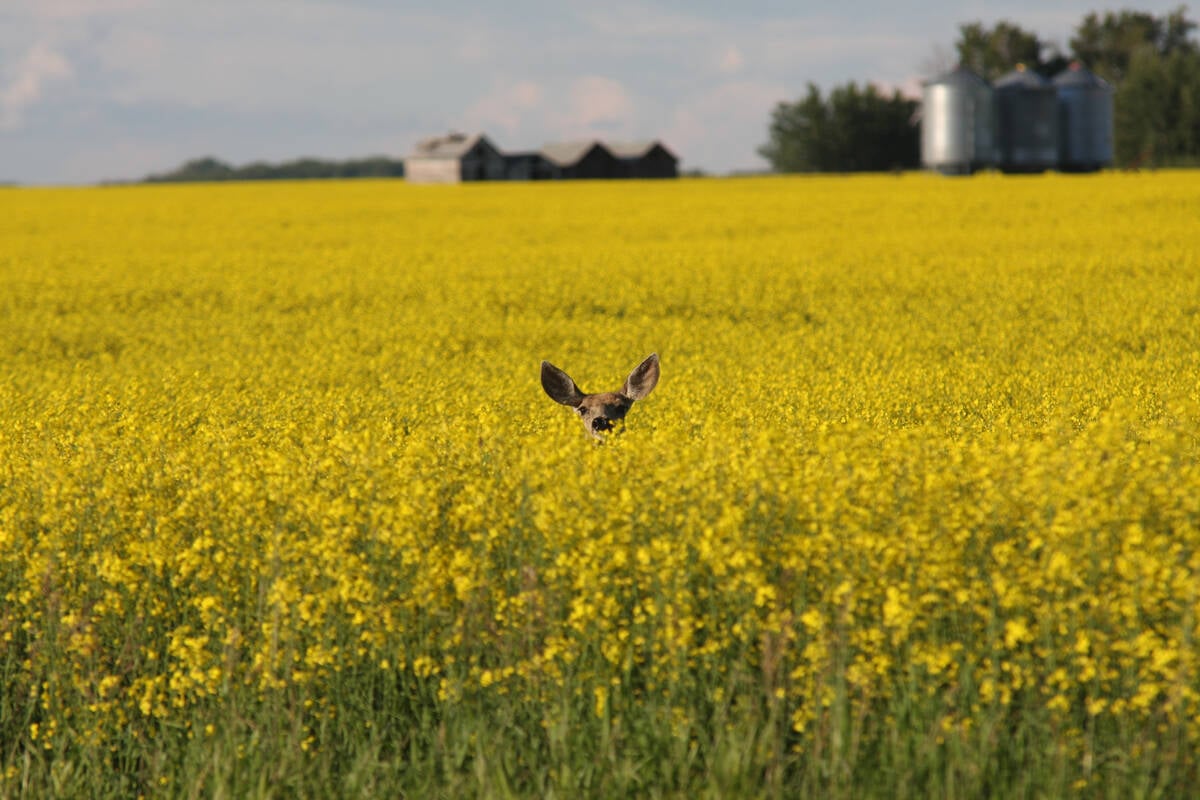Canadian farms are not expected to be hit as hard, partly because of decent crops and the low Canadian dollar
DES MOINES, Iowa — American producers are tightening their belts as farm income drops in many sectors.
The U.S. Department of Agriculture released its farm income forecast Aug. 25 and despite higher than average potential yields from corn and soybeans, prices are down on both crops, as well as for pork and dairy products.
As well, avian flu decimated large numbers of poultry over the past year.
In real dollars, adjusted for inflation, net farm incomes will fall to levels not seen since 2002.
The report shows net incomes, in current dollars, of US$58.3 billion in 2015, a 36 percent drop from 2014’s estimate of $91 billion. This is off about 53 percent from a record high of $124 billion in 2013.
Read Also

Drones now used to assess wildlife crop damage in Saskatchewan
Wildlife damage in Saskatchewan crops is now assessed by drones and artificial intelligence.
In a release after the report, secretary of agriculture Tom Vilsack said despite the lower incomes, “the past several years have seen unprecedented highs in farm income.”
A strong American dollar and soft commodity markets are also keeping a lid on farm receipts, while farm operating costs and investment remains relatively stable, said the USDA report.
At a John Deere machinery event in late August, senior company officials said that while incomes are expected to be lower, American farmers are focused on growth. Deere, like most machinery companies worldwide, has seen lower sales figures over the past year and has laid off large numbers of production employees.
“We are building in technologies that allow famers to be more efficient. When there is (farm income) pressure (as there is now) they keep investing so they can grow their businesses,” said Travis Becton, Deere’s director of marketing for the U.S. and Canada.
“When you think about the business we are in, and where the population is going to be by 2050, agriculture is great … for many reasons over the longer period,” he said.
USDA projections support this long-term outlook, suggesting that farmers will spend about $31.8 billion in 2015 on farm machinery, including trucks.
That’s down $ 1.2 billion from 2014, but above 2012 by $1 billion and 2013 by $2 billion. Tractor sales were not estimated separately, but need to remain strong to support total farm machinery sales because they have accounted for 45 percent of all machinery sales during the past three years.
Record sales of tractors took place in 2014, with about $18.5 billion being spent, compared to just over $ 16 billion in the previous two years.
By comparison, in 2010 American farmers spent $ 18 billion on all farm machinery.
Canadian incomes are not expected to be hit as hard, despite drought in parts of Western Canada. Farmer investments are expected to improve slightly because the crop has been better than expected, a low dollar has helped keep commodity prices strong and producers tended to hold back on spending in anticipation of a greater financial pinch than the 2015 crop appears to be delivering.
Steve Tomtene and his family farm 12,500 acres near Birch Hills, Sask., and said the better than expected crop and prices have helped confirm a recent decision to invest in a new high-horsepower, tracked tractor due to the efficiencies it will bring.
“You have to keep investing in the tools that keep your bottom line up when things get tighter,” he said.
In the U.S., crop receipts for 2015 are expected to decrease from 2014 by $12.9 billion, about six percent. Corn is biggest loser, likely down $7 billion. Soybeans might drop by about $3.4 billion and wheat $1.6 billion, says the USDA.
Livestock receipts will likely be down $19.4 billion, nine percent, largely due to lower milk and hog prices and poultry losses due to disease. Farm expenses are forecast fall by $1.5 billion, about half of one percent in 2015.
By the end of the year, American farmland prices are expected to have fallen by 2.1 percent from 2014 numbers, a $49 billion drop and farm debt will rise by 5.8 percent. Investments in machinery and other farm assets, with borrowed money, will increase 6.5 percent for 2015.
mike.raine@producer.com














